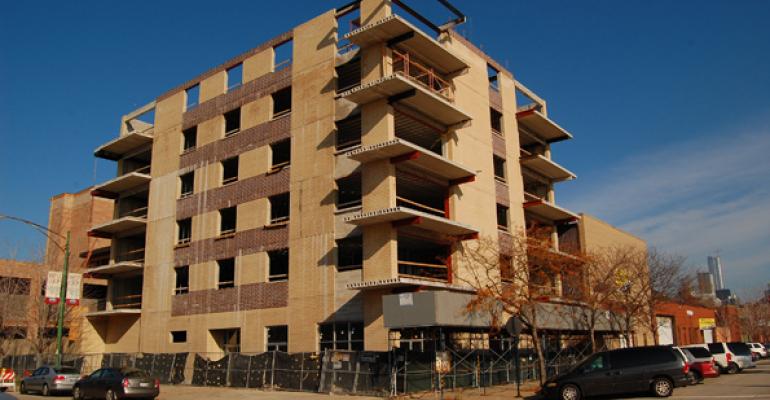Developers plan to start construction on fewer new apartments this year.
“We believe 2015 was the peak for this cycle,” says Ron Witten, founder of apartment research firm Witten Advisors, based in Dallas.
Developers increased the number of new apartment starts every year since the recovery began. But now, the number of new apartments may have finally caught up with the number of new renters who need these units. The percentage of vacant apartments has begun to creep upwards, though it’s still well under 5.0 percent on average in the U.S., according to most apartment researchers. Lenders are also much less willing to provide capital for new development.
Less new construction
In 2016, developers will start construction on 320,000 new apartment units, followed by 275,000 units annually during the next few years. In contrast, in 2015, they started work on 350,000 units, according to Witten.
“At a minimum, construction momentum appears to be stalling,” says Greg Willett, chief economist for MPF Research, a division of RealPage, Inc., based in Carrollton, Texas. Developers are already taking out fewer permits to build apartments: 73,000 in the first quarter of 2016, down from 77,000 during the same period the year before.
But even at a slightly slower pace, there is still a healthy amount of new construction in the market. “Our long-term expectation for multifamily construction is for it to stay at an elevated level relative to some periods in the past,” says Jay Denton, senior vice president of research and analytics for data firm Axiometrics, based in Dallas.
Young people continue to form new households, though it’s not clear for how long the young renters who signed leases earlier in the recovery will continue to rent. “The key is whether the Millennial generation will start to shift towards homes as they get married and have kids,” says Denton. “In two years you’ll have Millennials that are as old as 36.”
The broader U.S. economy continues to grow, producing roughly 200,000 new jobs a month, month after month. “The biggest concern is just that recession will stall demand,” says Willett.
So far developers have not been avoiding metropolitan areas with the most new construction, perhaps with the exception of Houston. “Instead, decisions are being made on the neighborhood level,” according to Willett.
Permit volumes have dropped significantly in about a third of metro areas, are holding steady in about a third and continue to rise in about a third, according to Willett. Permits fell sharply in Boston, Los Angeles and New York City, but rose in San Francisco and Washington, D.C.
Developers are starting to build fewer apartments partly because banks are refusing to pay for it. As a flood of new apartment developments opens and the percentage of vacant apartments has started to rise, banks are refusing to lend to weak deals and are lending less on the stronger deals. “Some banks are declining to quote some deals altogether,” says Mitchell Kiffe, senior managing director for debt and structured finance in the capital markets group of real estate services firm CBRE.

